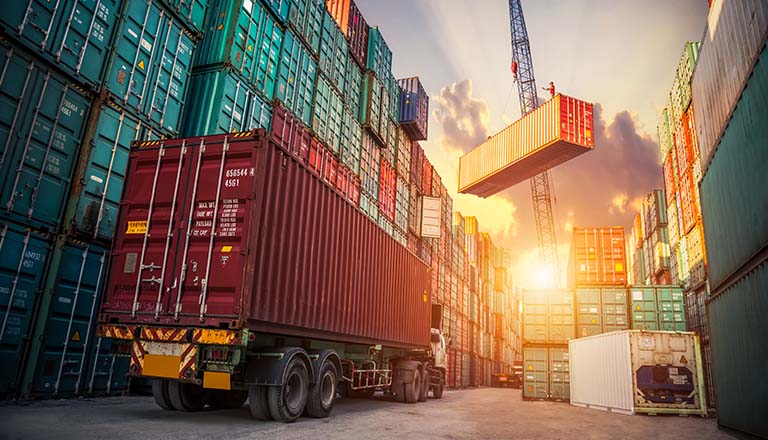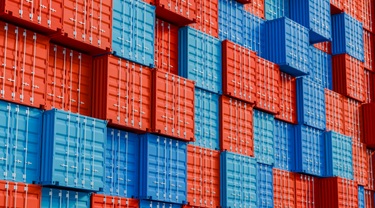Since the onset of the pandemic, global supply chains have gained a newfound prominence in pop culture. Gone are the days when only a small group of professionals worried about supply chain logistics. Now, supply chain disruptions and shipping logjams are so commonplace that we’re adjusting to swapping out our favourite brands and understand what’s behind the delay in our furniture delivery.
At EDC Economics, we’ve been paying close attention to supply chain woes and have devoted a number of Weekly Commentaries to the topic. This week, we look beyond the current disruptions caused by the pandemic and the war in Ukraine and delve into the broader supply chain vulnerabilities facing Canadian companies, including the implications across key sectors.
Early in the pandemic, our colleagues at Global Affairs Canada published an excellent research piece entitled Vulnerability of Canadian industries to disruptions in global supply chains, which systematically measures supply chain vulnerabilities faced by 216 industries across Canada. They combed through extensive datasets and found that certain industries (almost always under the broader manufacturing category) were more likely to face supply chain shocks than others.
When we grouped these industries across broad sectoral categories, we found that 62 industries across 10 sectors were highly vulnerable to both upstream and downstream supply chain risks. These industries account for about $310 billion in annual Canadian exports, or 40% of our overall foreign sales. Specifically, autos and minerals had the greatest number of highly vulnerable industries (23 in total), making up a significant chunk of our annual exports, at $162 billion. Other sectors with highly vulnerable industries, include agriculture and agri-food, forestry, transportation, chemicals and plastics, and mechanical and electrical manufacturing.
What kind of shocks are these industries most prone to? One major source of vulnerability is a reliance on inputs, especially ones that are available in limited supply globally. This is a significant risk, especially when we consider some of the major sectors that are likely to drive growth in the future.
The limited or concentrated global supply of inputs is most obvious when we look at mining and minerals. Specifically, the supply of metals such as copper, cobalt, graphite, nickel and lithium, which are critical to ensuring an uninterrupted transition to clean technologies. Production of these minerals is concentrated amongst a few countries, the majority of which have seen declining trends in political stability.
Our own domestic production in this area is quite low, and the latest available data by the U.S. Geological Survey show that Canada accounts for slightly more than 3% of the world’s known lithium resources, far behind Chile, China, Australia, Argentina and the United States, among others. Similarly, our reserves of cobalt amount to 2.9% of known global reserves, lagging Australia, Cuba, Indonesia and the Democratic Republic of Congo. Of the 95 million tonnes of nickel reserves found around the world, only about 2% is here in Canada.
You should also check out
Expert insights on how to protect your business against disruptions now and in the future.
While it’s good news that Canada does have some of these valuable resources, our deposits are likely insufficient to secure supply chain independence for much needed clean technologies, such as electrical vehicles (EVs), battery storage infrastructure and solar panels.
Our second biggest source of vulnerability is geographical concentration of exports, a well-known issue that’s tended to dominate trade research in Canada. Simply put, we continue to rely on a few key markets, the U.S. being one of the major ones, for our exports.
While the Canada-United States-Mexico Agreement (CUSMA) no doubt provides advantages for each of the three economies involved, historically, we have struggled to realize the full export potential available across other emerging economies, especially in Asia. This makes Canadian exporters particularly vulnerable to sudden demand shocks in our traditional export markets, where overreliance on a few customers could introduce significant uncertainty in our future growth outlook. Ongoing geopolitical uncertainties add an additional layer of complexity, when strategizing about how best to address these risks.
The bottom line?
Our conversation about supply chain resilience needs to evolve beyond recent headline-grabbing developments. Granted, it took the pandemic to bring vulnerabilities to light, but now that we’re here, we need to strategically consider whether we have the right systems in place to ensure sustained Canadian business growth. Clearly, there are important gaps that need to be addressed.
The solution here may not necessarily lie in reshoring and pivoting away from globally integrated production networks. After all, businesses will always look to maximize profits and, in doing so, land on the most productive way to churn out goods and services. Rather, we should consider the costs and benefits of geographical concentration—both when it comes to our inputs and our exports. The solution won’t be simple, or uniform, but our objective at hand to grow Canadian exports over the coming decades is no small feat.
This week, a very special thank you to Meena Aier, director of our Research and Analysis Division. I also want to thank David Boileau and Aaron Sydor, at Global Affairs Canada, for the data and analysis behind their report on supply chain vulnerabilities, on which this commentary is based.
As always, at EDC Economics, we value your feedback. If you have ideas for topics that you would like us to explore, please email us at Economics@edc.ca and we’ll do our best to cover them.
This commentary is presented for informational purposes only. It’s not intended to be a comprehensive or detailed statement on any subject and no representations or warranties, express or implied, are made as to its accuracy, timeliness or completeness. Nothing in this commentary is intended to provide financial, legal, accounting or tax advice nor should it be relied upon. EDC nor the author is liable whatsoever for any loss or damage caused by, or resulting from, any use of or any inaccuracies, errors or omissions in the information provided.







